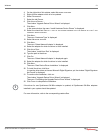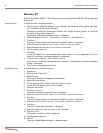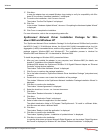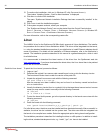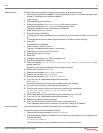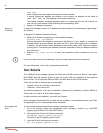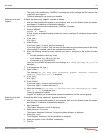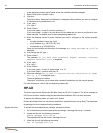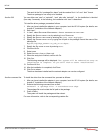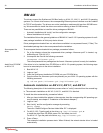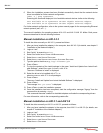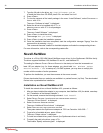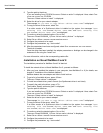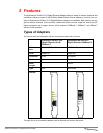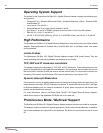
SysKonnect SK-98xx V2.0 Gigabit Ethernet Adapter
HP-UX 29
The result is the file “<package file>.depot” and the readme file in “.txt” and “.html” format.
The driver package is now ready to be installed.
Use the GUI You can either use “sam” or “swinstall”. “sam” also calls “swinstall”, i.e. the installation is identical
(from step 3 onwards). In the following, the installation with “sam” is described.
To install the driver package, proceed as follows:
1. After you have installed the adapter in your computer, boot the HP-UX system (for details, see
chapter 2 "Installation of the Network Adapter").
2. Start “sam”.
3. In “sam”, select S
OFTWARE MANAGEMENT > INSTALL SOFTWARE TO LOCAL HOST.
4. Specify the S
OURCE DEPOT TYPE by selecting LOCAL DIRECTORY.
5. Specify the S
OURCE HOST NAME by entering the <host name>, e.g. hpdev.
6. Specify the SOURCE DEPOT PATH by typing the full path to the package file and the name of the
package file,
e.g.
usr/tmp/skge_HPUX11.00_64b_v6.00.depot.
7. Specify the SOFTWARE FILTERS by entering None.
8. Confirm with OK.
9. Select
SKGE.
10. Select A
CTIONS > INSTALL (ANALYSIS).
11. When the analysis is finished, confirm with O
K.
12. Click Y
ES.
The following message will be displayed: “
The system will be rebooted as soon as
Installation is complete. Do you still wish to start Installation?
”.
13. Confirm with Y
ES.
14. After the installation is completed, click D
ONE.
15. Click O
K to reboot.
The driver has been installed and the network adapter can now be configured.
Use the command line To install the driver from the command line, proceed as follows:
1. After you have installed the adapter in your computer, boot the HP-UX system (for details, see
chapter 2 "Installation of the Network Adapter").
2. Execute the following command from a shell:
swinstall -s <package file> -x autoreboot=true skge
The package file must include the full path to the package.
3. Press <Enter>.
The system will install the package and then reboot.
For more information, refer to the corresponding readme file.



